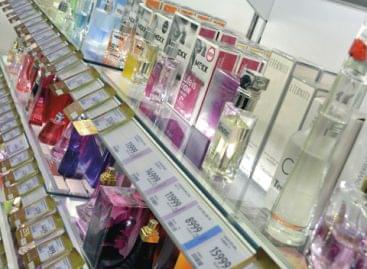Magazine: The place where everyone gathers
According to Szilvia Máté, director of BD-Expo Kft. (the official representative of Messe Düsseldorf, Veletrhy Brno and AllWorld Co. in Hungary), leading trade exhibitions, large trade fairs benefit from economic hardships because most companies decide to participate only in these. They give their best at these events to maximise the returns from investing in their participation. This tendency leaves smaller trade fairs in a difficult position. Gabriella Szántó, the communications director of Hungexpo also sees a concentration process in the trade fair sector. Hungexpo’s experience is that exhibiting companies pay increased attention to costs. Hungexpo is very much aware of the fact that the internet is good for getting in touch with a prospective business partners, but concluding major deals is nearly impossible without meeting in person – and the company can provide the best conditions for exactly this. Szilvia Salánki, who is responsible for trade fairs at the German-Hungarian Chamber of Commerce and Industry, told our magazine that Hungarian exhibitors are present at Spielwarenmesse with smaller stands than the average, but at the same time the number of Hungarian participants is growing. Ms Salánki reckons that exhibiting firms demand bigger support from organisers than before. Zsuzsa Gönczy is the agent who represents Fiera Milano in Hungary and the Czech Republic. She thinks that large trade fairs have also improved their positions because they offer new services. For instance assisting participants in marketing preparation results in the increased efficiency of their trade fair presence. Another example: a few years ago Fiera Milano Spa introduced its EMP (Expo Matching Program) system. On this platform exhibitors and retailers can get in touch, all the so-called top buyers register online and indicate what goods or services they are interested in, while exhibitors indicate in their profiles from which countries they would like to acquire new partners. Gitta Kerékgyártó, who represents Messe Berlin in the German-Hungarian Chamber of Commerce and Industry, is of the opinion that first and foremost companies participate in trade exhibitions not because they want to conclude deals, but because they wish to nurture their already existing relationships, strengthen their image and introduce their new products. Ábel Kuncz, who works for exhibition organiser Mac-Line Hungary Kiállításszervező Kft. agrees that typically companies work on improving their image at trade fairs but he thinks that they also want to make business deals. Exhibiting firms can also use the Talk B2B software to be more efficient in these areas. Márta Kakuk, the director of MON-ART Reklámiroda Kft. (the official representative of Koelnmesse in Hungary) believes that Hungarian companies don’t have big enough budgets to appear at trade fairs with spectacular stands, despite the fact that such a step does pay off afterwards. If a company decides to take part in a trade exhibition, it should spend as much on it as possible. Sometimes creative ideas can help a firm stand out from the crowd. It is also true that a well-designed stand can be used at other trade exhibitions as well. Szilvia Máté told Trade magazin that those stands attract visitors which are characterised by openness, a welcoming atmosphere and a simple but stylish design. It is also important to have furniture that can be rearranged easily, e.g. if more visitors turn up at the same time, they can sit down around the same table. Ábel Kuncz opines that a lack of financial resources can be felt in the stand building situation as well: typically negotiations start about 12-15m² stands but prospective exhibitors finally settle with 6-9m² ones. With a size like this there is no point in building customised stands, so exhibitors tend to use fairs’ basic stand service. Trade exhibition organisers also provide participants with many opportunities to get to know each other, such as online presence or mobile apps.
Related news
Related news
Even though the price of cocoa has halved, chocolate will not become cheaper
🎧 Hallgasd a cikket: Lejátszás Szünet Folytatás Leállítás Nyelv: Auto…
Read more >Temu is crushing domestic webshops – Christmas won’t change either
🎧 Hallgasd a cikket: Lejátszás Szünet Folytatás Leállítás Nyelv: Auto…
Read more >Not a marginal phenomenon: counterfeiting has become a systemic problem in Hungary
🎧 Hallgasd a cikket: Lejátszás Szünet Folytatás Leállítás Nyelv: Auto…
Read more >



